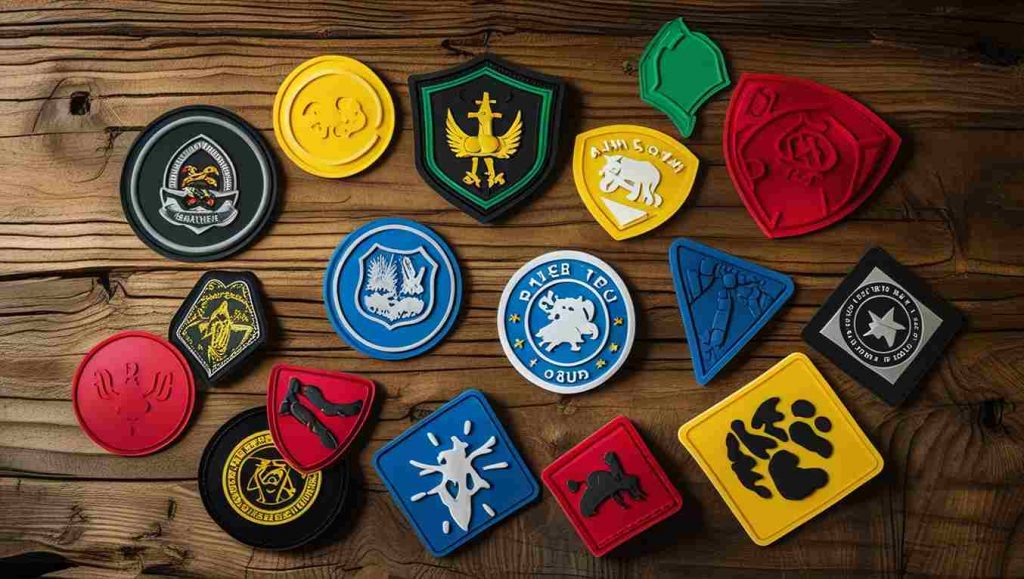- Home
- Blog
- Custom Patches
- PVC
- 2D vs 3D PVC Patches: Understanding the Difference
2D vs 3D PVC Patches: Understanding the Difference

What are pvc patches?
A PVC patch is a custom patch made from soft but durable polyvinyl chloride, designed to withstand weather, heat, and wear. They are popular for uniforms, outdoor gear, sports teams, and branding because they hold vibrant colors and fine details.Common PVC patch backing options include Velcro, sew-on, and adhesive, making them versatile for different uses. When asking what is a PVC patch, it’s important to note the two main styles: 2D and 3D. Both feature raised and recessed areas, but 2D patches have flat surfaces, while 3D patches add rounded, sculpted elements for more depth and visual impact.Understanding 2D PVC Patches
2D PVC patches are built with multiple raised and recessed layers, but each level is a flat on top layer, giving the design a sharp and structured finish. The stairs-like layers create clear separation between colors and details, making these patches ideal for logos, text, and simple graphics.Their clean and crisp appearance ensures clarity even at smaller sizes. With a typical thickness of about 2.5 mm, 2D PVC patches remain lightweight while still durable. They are cost-effective, making them the best choice for bulk orders, text-heavy layouts, or projects where precision and affordability are more important than extra depth.Understanding 3D PVC Patches
3D PVC patches feature raised elements with a rounded on top layer, creating smooth, sculpted curves instead of flat steps. This design style delivers more depth and a natural concave shape, making it perfect for lifelike elements such as faces, mascots, or detailed logos.With a typical thickness of about 3.5 mm, 3D patches are slightly thicker than 2D, adding weight and substance. The result is a striking visual pop that stands out on uniforms, hats, or gear. Their premium look makes them a preferred choice for brands or teams that want patches with bold, dimensional style and extra impact.Similarities & Customization Options
Both 2D and 3D PVC patches share the same materials and durability, making them long-lasting for everyday use. They support customizable backs such as Velcro, sew-on, iron-on, or adhesive, giving flexibility for different applications.
Each design starts with a strong base layer that anchors the raised details. A popular option is combining 2D and 3D layers in one patch, such as keeping text flat while giving logos or icons a sculpted finish. Since rubber patches are made from PVC and silicone, and nearly 95% of users prefer PVC over silicone, you can also explore our detailed blog on PVC vs Silicone.
Cost Considerations
The PVC patch cost difference mainly comes from the production process. While 2D patches use flat layers, 3D designs require deeper sculpting and thicker metal molds. This process also consumes more PVC material, which increases the price.
On average, 3D PVC costs more, often 15–20% higher than 2D. The added expense delivers extra depth, curves, and a premium finish, making it worth the investment for standout designs.
Applications & Best Use Cases
2D PVC patches are best for logos, text-heavy layouts, and large runs like uniforms or branded merchandise. They deliver clarity and are perfect as budget-friendly PVC patches.On the other hand, 3D PVC patches add sculpted depth and curves, making them ideal for mascots, hat designs, collectible keychains, or any PVC patch for realism. Choosing between the two depends on whether you need crisp simplicity or bold, lifelike detail in your design.Conclusion
Choosing between 2D and 3D PVC patches depends on your design goals. Go with 2D if you want clean and crisp lines at a lower cost. Pick 3D if you need sculpted curves, extra depth, and a premium look. Both options are durable, weather-resistant, and fully customizable, making them one of the most versatile branding tools today.
At Nexus Patches, we specialize in custom pvc patches no minimum crafted in both 2D and 3D styles. From sports teams and military units to biker clubs, police, and corporate branding, we deliver patches with precision and style. With free shipping, no minimum order, and competitive pricing, we make it simple to get the perfect patch. Contact us today to create PVC patches that truly stand out.
